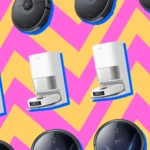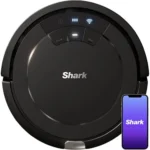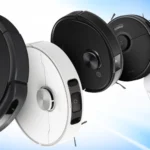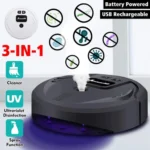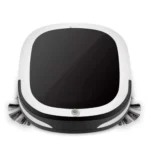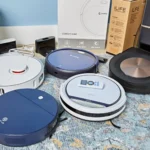Are you tired of dusting and sweeping your home floors every day? Are you looking for a smarter and more convenient way to keep your household clean? Look no further than smart vacuum cleaners with voice control! These advanced cleaning tools have taken the home cleaning game to the next level, making cleaning as easy as just speaking a command. But are they really better than traditional vacuum cleaners? In this article, we will compare the pros and cons of each type of vacuum cleaner, analyze their features, voice control compatibility and setup, usability, and price. So, let’s dive into the world of modern home cleaning tools and find out which one is the winner!
Pros and Cons of Smart Vacuum Cleaners with Voice Control
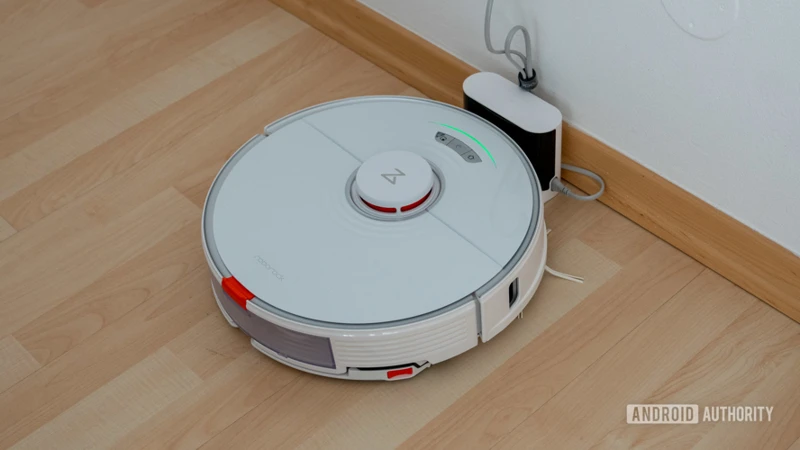
Smart vacuum cleaners with voice control have taken the world of household cleaning to a whole new level. With the help of voice-activated technology, these devices offer unparalleled convenience, efficiency, and ease of use. However, as with any product, there are pros and cons to consider before making a purchase. In this section, we’ll take a look at the benefits and drawbacks of smart vacuum cleaners with voice control, and provide insight into whether they are truly worth the investment. For more information on the advantages of these devices, check out our article on 5 Reasons Smart Vacuum with Voice Control is a Game-Changer.
Pros
When it comes to smart vacuum cleaners with voice control, there are several advantages that set them apart from traditional vacuum cleaners. Here are some of the pros to consider:
| Convenience: | One of the most significant advantages of smart vacuum cleaners with voice control is the convenience they offer. With just a simple voice command, you can activate the vacuum and clean your floors without having to lift a finger. Not only does this save time, but it’s also a great option for people with mobility issues. |
| Efficiency: | Voice-activated smart vacuums are designed to maximize cleaning efficiency. Equipped with advanced sensors and mapping technology, they can identify areas that need extra cleaning attention and adjust their cleaning patterns accordingly. This ensures that your floors are cleaned thoroughly and efficiently every time. |
| Improved Air Quality: | Smart vacuums with voice control don’t just remove dirt, dust, and debris from your floors—they also help to improve indoor air quality. Many models come with high-quality filters that can capture allergens and particles, creating a healthier living environment. |
| Great for Pet Owners: | If you have pets, you know how quickly their fur and dander can accumulate around your home. Smart vacuums with voice control are great for pet owners because they can be programmed to clean more frequently, keeping your home cleaner and more comfortable for your furry friends. Some models even have specialized brushes and filters designed specifically for pet hair. |
| Maximizing Efficiency: | Smart vacuums with voice control can help you maximize your cleaning efficiency in several ways. For example, some models have a “zone cleaning” feature, which allows you to direct the vacuum to focus specifically on certain areas of your home that may need extra attention. This can be especially helpful for kitchens, entryways, and high-traffic areas. |
| Improved Accessibility: | For people with disabilities, smart vacuums with voice control can provide an improved level of accessibility to cleaning. People who struggle to use traditional vacuum cleaners due to mobility or other issues can easily control and use these devices to keep their homes clean without difficulty. |
Smart vacuum cleaners with voice control offer a range of benefits that traditional vacuum cleaners simply can’t match. From improved efficiency and air quality to convenience and accessibility, these devices can make a significant difference in your household cleaning routine. To learn more about the advantages of smart vacuums with voice control, check out our detailed guide.
Cons
While smart vacuum cleaners with voice control have many advantages, they also have their share of disadvantages that should be considered before making a purchase. Here are some of the potential drawbacks:
- Cost: Smart vacuum cleaners with voice control are often more expensive than traditional vacuum cleaners due to their advanced features and technology.
- Technical issues: As with any technology, smart vacuum cleaners with voice control can experience technical difficulties, which may require troubleshooting or repairs.
- Compatibility issues: Some smart vacuum cleaners with voice control may not be compatible with certain voice control platforms or smart home systems, which can be frustrating for users who have invested in these systems.
- Privacy concerns: Smart vacuum cleaners with voice control use voice recognition technology, which can raise privacy concerns for some users who are uncomfortable with their conversations being recorded.
- Complex setup: Setting up a smart vacuum cleaner with voice control can be more complex than setting up a traditional vacuum cleaner, which could be a barrier for some users.
While smart vacuum cleaners with voice control offer many benefits, they may not be the best fit for everyone. Users should carefully consider the potential drawbacks before making a purchase to ensure that they are making an informed decision. If you want to learn more about the benefits of smart vacuum cleaners with voice control, check out the voice-activated smart vacuum cleaners: future of house cleaning article.
Pros and Cons of Traditional Vacuum Cleaners
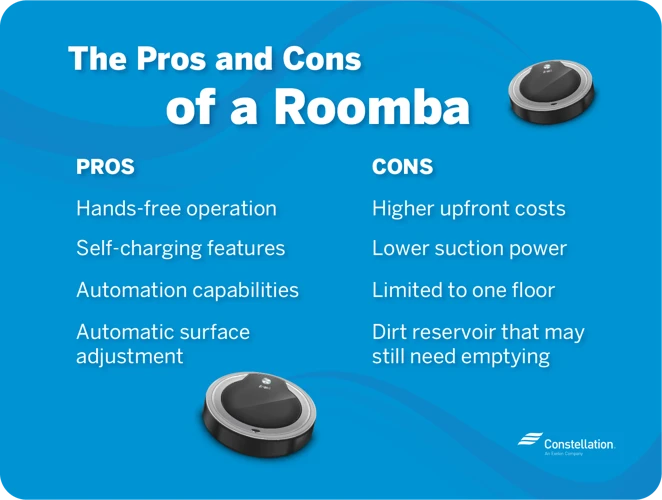
In a world where smart technology is taking charge, it’s hard to deny the convenience of voice-activated cleaning. However, traditional vacuum cleaners still hold their own when it comes to basic cleaning needs. Let’s take a look at the benefits and drawbacks of traditional vacuum cleaners in comparison to their high-tech counterparts. Whether you’re looking to save some money or prefer a more hands-on approach to cleaning, this comparison will help you decide what works best for you. And if you want to learn more about smart vacuum cleaners with voice control, be sure to check out our previous article on the subject.
Pros
Smart vacuum cleaners with voice control have become increasingly popular in recent years, and for good reason. Here are some of the pros of using a smart vacuum cleaner with voice control:
- Convenience: One of the primary benefits of having a smart vacuum cleaner with voice control is the convenience it provides. With just a simple voice command, you can easily turn the vacuum on and off, change its cleaning modes, and even schedule it to clean at specific times. This frees up your time to focus on other important tasks.
- Better Air Quality: Smart vacuum cleaners with voice control often come equipped with HEPA or advanced filtering systems that can effectively remove common allergens and pollutants from the air, improving the air quality in your home. This is particularly important for individuals who suffer from allergies or asthma. (For more information on the air purifying capabilities of smart vacuums, check out our article on smart vacuums and air quality.)
- Great for Pet Owners: If you’re a pet owner, you know how challenging it can be to keep your home clean and free of pet hair. Smart vacuum cleaners with voice control have become a go-to solution for pet owners, as they often come with specialized brushes and tools designed to effectively clean pet hair and dander from floors and furniture. (For more information on how smart vacuums can benefit pet owners, check out our article on smart vacuums and pet care.)
- Maximizes Efficiency: With a smart vacuum cleaner with voice control, you can program it to clean your home while you are away, ensuring that your floors are always clean and free of debris. This maximizes the efficiency of the vacuum and helps keep your home cleaner overall. (For tips on how to maximize the efficiency of your smart vacuum, check out our article on smart vacuum cleaning tips.)
- Improved Accessibility: For individuals with disabilities or mobility issues, a smart vacuum cleaner with voice control can be a game-changer. With just a simple voice command, you can easily control the vacuum and ensure that your floors are clean and safe to navigate. (For more information on how smart vacuums can improve accessibility, check out our article on smart vacuums and accessibility.)
The benefits of using a smart vacuum cleaner with voice control are many, making it a popular and convenient choice for modern households.
Cons
When it comes to smart vacuum cleaners with voice control, there are a few drawbacks to consider. Here are the cons:
- Dependency on internet connection: A smart vacuum cleaner with voice control must be connected to the internet to work properly. If the connection is lost, you won’t be able to control it using voice commands.
- Complex setup: Some users find the setup process for a smart vacuum cleaner with voice control to be complicated and time-consuming. It may require downloading additional apps and connecting to multiple devices before it can be properly configured.
- Higher cost: Smart vacuum cleaners with voice control tend to be more expensive than traditional vacuum cleaners. While they do offer added convenience, users with a tight budget may find it difficult to justify the higher cost.
- Less reliable voice command recognition: Some users have reported issues with the voice recognition technology in smart vacuum cleaners not working as well as they expected. It may not always recognize commands accurately, which can be frustrating.
While these cons may be a concern for some users, it is important to weigh them against the benefits and features of smart vacuum cleaners with voice control.
Features Comparison
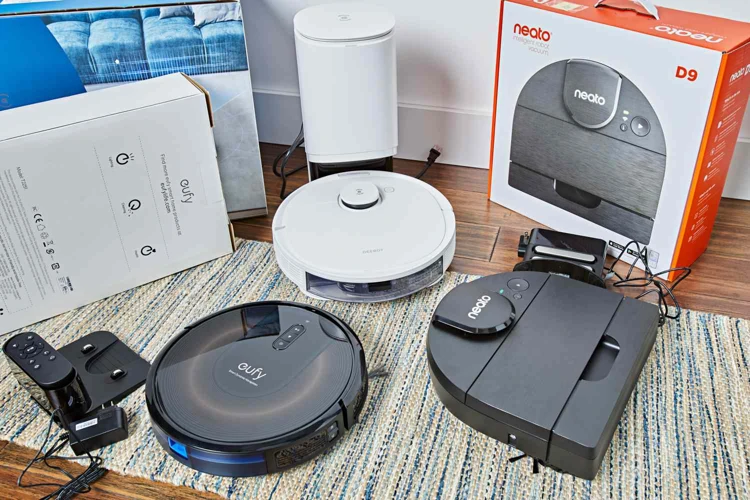
Now that we have delved into the pros and cons of both smart vacuum cleaners with voice control and traditional vacuum cleaners, it’s time to compare their features to see which one offers better value for your home cleaning needs. Let’s take a closer look at the suction power, navigation, dirt collection, and filtering system capabilities of these two types of vacuum cleaners. It’s important to note that each of these features plays a significant role in determining the cleaning efficiency and effectiveness of a vacuum cleaner. So, let’s get started and see which one comes out on top!
Suction Power
When it comes to selecting a vacuum cleaner, suction power is a key aspect to consider. Smart vacuum cleaners and traditional vacuum cleaners have different suction power levels, and it’s essential to evaluate which one fits your needs.
Smart Vacuum Cleaners with Voice Control are designed to have high suction power in order to pick up dirt and debris easily. Most smart vacuum cleaners have a motor that ranges from 1000 to 1500 watts, which is more than enough power for cleaning carpets, rugs and hard floors. Additionally, some smart vacuum cleaners have a boost mode that significantly increases the suction power for extra cleaning when it’s necessary.
On the other hand, Traditional Vacuum Cleaners are also designed to provide high suction power. However, the suction power may vary depending on the model and price. For example, some traditional vacuum cleaners have a motor with 800 watts, while others have a motor with 2000 watts or higher. The stronger the motor, the better cleaning results it will provide.
Here’s a comparison table of suction power between Smart Vacuum Cleaners with Voice Control and Traditional Vacuum Cleaners:
| Smart Vacuum Cleaners with Voice Control | Traditional Vacuum Cleaners | |
|---|---|---|
| Motor Power | 1000-1500 watts | 800-2000 watts |
| Boost Mode | Yes | No |
| Noise Level | Low to Moderate | Low to High |
Smart Vacuum Cleaners with Voice Control have comparable suction power to Traditional Vacuum Cleaners. However, the boost mode feature in some smart vacuum cleaners gives them an advantage when it comes to cleaning tough stains and pet hair. It’s necessary to consider your cleaning requirements and preferences before deciding which vacuum cleaner to choose.
Navigation
When it comes to navigation, smart vacuum cleaners with voice control have a significant advantage over traditional vacuum cleaners. They use a variety of sensors and technologies such as lidar, cameras, and lasers to map the room and create a virtual map of the space they need to clean. The map can then be used to guide the vacuum cleaner around objects and efficiently clean the entire room.
On the other hand, traditional vacuum cleaners typically rely on their users to manually guide them around the room. This requires a significant amount of time and effort and may lead to inefficient cleaning results, especially if the user misses certain areas.
To further illustrate the differences in navigation features between smart vacuum cleaners and traditional ones, consider the following comparison:
Navigation features of smart vacuum cleaners with voice control:
- Mapping technology to create a virtual map of the room
- Advanced sensors to detect and avoid obstacles
- Ability to navigate and clean in straight lines or specific patterns
- Automatic return to docking station after cleaning is complete
- Can be scheduled to clean specific rooms at specific times
Navigation features of traditional vacuum cleaners:
- Manual guidance by the user
- May require more time and effort to clean the entire room
- May miss certain areas, especially those that are difficult to reach
- May require the user to move furniture or other obstacles manually
- May not offer scheduling or automated docking features
The navigation features of smart vacuum cleaners with voice control offer a significant advantage over traditional vacuum cleaners, providing fast and efficient cleaning even in hard-to-reach areas.
Dirt Collection
One of the most important factors to consider when choosing between smart vacuum cleaners with voice control and traditional vacuum cleaners is how they collect dirt. Here are some things to keep in mind:
- Smart Vacuum Cleaners: Typically, smart vacuum cleaners use a combination of brushes, suction power, and filters to collect dirt. Some models use advanced sensors to detect and prioritize areas that need the most attention. They also have a dirt canister that can be emptied easily, often with just the touch of a button.
- Traditional Vacuum Cleaners: Traditional vacuum cleaners rely mostly on suction power to collect dirt. They usually have a bag or a canister that needs to be changed or emptied manually. Some models may also have filters that need to be replaced periodically.
Smart vacuum cleaners with voice control tend to offer more advanced dirt collection features. They can be programmed to clean specific areas or rooms, and some can even detect changes in floor types and adjust accordingly. Traditional vacuum cleaners may be more basic in this regard, but they are often more affordable and can still do a great job collecting dirt and debris.
Filtering System
When it comes to keeping our homes clean, the quality of the filtering system of our vacuum cleaners is of utmost importance. The filtering system plays a vital role in ensuring that the air quality in our homes remains healthy for us to breathe. In this section, we’ll compare the filtering systems of smart vacuum cleaners with voice control and traditional vacuum cleaners.
Smart Vacuum Cleaners with Voice Control:
- Most smart vacuum cleaners come equipped with advanced filtration systems, some of which use HEPA (High-Efficiency Particulate Air) filters. These filters are capable of trapping 99.97% of dust, pollen, and other allergens as small as 0.3 microns.
- The best part is that the filtration system is fully automated, which means that you don’t have to handle any filters or clean them manually. Once the filter inside the vacuum cleaner gets clogged, the vacuum will automatically detect it and alert you to replace it.
- With voice control, you can even command your smart vacuum to start or stop cleaning without having to touch it, which ensures that you don’t come into contact with the dirt and dust that the vacuum cleaner has picked up.
- However, one downside of smart vacuum cleaners with voice control is that the filters used are often expensive and need to be replaced periodically.
Traditional Vacuum Cleaners:
- Traditional vacuum cleaners typically come with basic filtration systems that usually include a pre-motor filter and a post-motor filter. However, some high-end models come with HEPA filters as well.
- Cleaning and maintaining the filters can be a tedious job, and without proper maintenance, the filters can become clogged and reduce the suction power of the vacuum cleaner.
- Although traditional vacuum cleaners with HEPA filters can trap small particles and airborne allergens, most traditional models do not have fully automated filtration systems. You will have to manually clean or replace the filters on a regular basis.
- While it is cheaper to replace filters in traditional vacuum cleaners, manual cleaning can be time-consuming and messy, and it’s hard not to come into contact with the dust and dirt you’ve collected.
In the end, it’s clear that smart vacuum cleaners with voice control outperform traditional vacuum cleaners in terms of their filtering systems. They offer advanced filtration systems that can automatically detect when the filter needs to be changed, and with voice control, you don’t have to worry about coming into contact with dirt and dust while using it.
Voice Control Compatibility and Setup
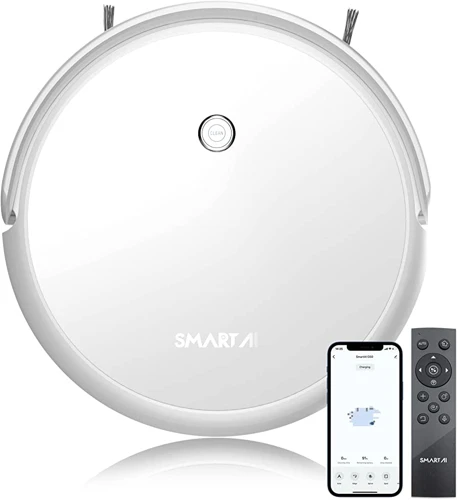
Controlling your vacuum cleaner with your voice might sound like something out of a sci-fi movie. But, with the advancements in technology, it’s now a reality that you can experience. The convenience of being able to control your vacuum cleaner from your couch or bed is a game-changer. However, before investing in a smart vacuum cleaner with voice control, it’s important to know the compatible platforms and setup process. Let’s dive into the details!
Compatible Platforms
Smart vacuum cleaners with voice control have revolutionized the way we clean our homes. These high-tech devices rely on a variety of compatible platforms to offer hands-free control via voice commands. Here’s a breakdown of the most popular platforms for voice control compatibility:
| Platform | Smart Vacuum Compatibility |
|---|---|
| Amazon Alexa | Works with most smart vacuum brands, such as Roomba and Neato. |
| Google Assistant | Also works with most smart vacuum brands, including Roomba and Neato. |
| Apple Siri | Not currently compatible with many smart vacuum brands, but there are some workarounds available. |
| Samsung Bixby | Works with select smart vacuum brands, such as Powerbot. |
| Microsoft Cortana | Currently not compatible with any smart vacuum brands. |
It’s important to note that not all smart vacuum cleaners with voice control are compatible with every platform. Some brands may only work with one or two platforms, while others may work with three or more. It’s crucial to research which platform your preferred smart vacuum cleaner is compatible with before making a purchase.
The added convenience of voice control through compatible platforms can make cleaning a breeze. And with a growing number of brands offering voice control compatibility, it’s easier than ever to find the perfect smart vacuum cleaner for your home.
Setup Process
When it comes to setting up a smart vacuum cleaner with voice control, the process may vary based on the specific brand and model. However, there are a few general steps you can expect to follow. Here are the key aspects to consider:
1. Choose the right platform: First, make sure that your smart vacuum cleaner is compatible with your voice assistant of choice. Some models may work with Google Assistant, while others are designed to integrate with Amazon Alexa. It’s important to confirm this information before making a decision, since it will affect the overall setup process.
- 2. Download the app: Most smart vacuum cleaners can be controlled through a dedicated smartphone app that’s linked to your home Wi-Fi network. To set up the vacuum cleaner, you’ll need to download this app onto your device and create an account if necessary.
- 3. Connect the vacuum to Wi-Fi: Next, you’ll need to connect the smart vacuum cleaner to your home Wi-Fi network. This typically involves selecting the appropriate network from a list of available options and entering the correct Wi-Fi password. Once the vacuum cleaner is connected to Wi-Fi, it will be able to receive voice commands and other instructions directly from your phone or voice assistant.
- 4. Enable voice control: If you’re planning to use voice commands to control your smart vacuum cleaner, you may need to activate this feature from the app. This could involve linking your vacuum cleaner to your voice assistant account, or enabling a specific “voice control” setting within the app itself.
- 5. Test the connection: Once you’ve completed the setup process, it’s a good idea to test the connection between your smart vacuum cleaner and your voice assistant to make sure everything is working properly. Try out a few basic voice commands, such as “start the vacuum” or “pause cleaning,” to confirm that the system is responding correctly.
Note: It’s worth mentioning that the setup process for traditional vacuum cleaners is generally much simpler. Since these devices don’t require Wi-Fi connectivity or support for voice commands, you can usually get started right out of the box. However, if you value the convenience and hands-free functionality of a smart vacuum cleaner with voice control, the extra setup steps may be worth the effort.
Usability
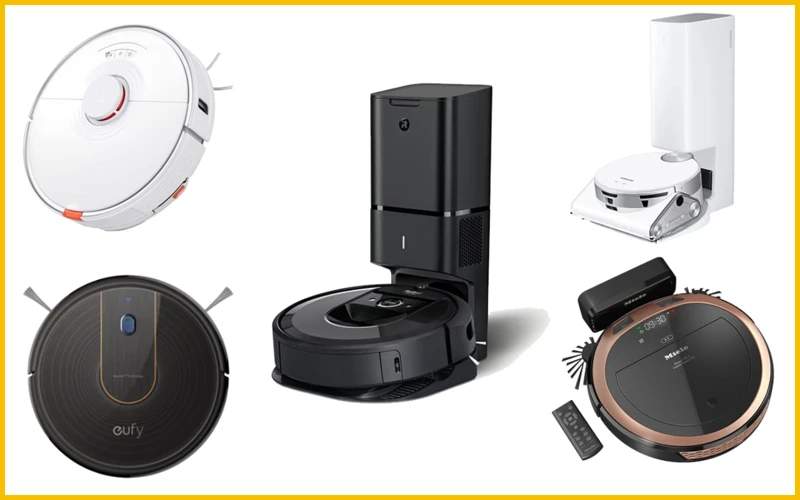
When deciding between smart vacuum cleaners with voice control or traditional vacuum cleaners, usability is an important factor to consider. The ways in which you can interact with your vacuum cleaner can greatly impact your cleaning experience, and both options offer their own unique set of features. Below, we will explore the various aspects of usability and what each option has to offer when it comes to smartphone control, remote control, manual control, and quietness. So, let’s delve into the nuts and bolts of how these vacuums actually work and how you can use them to make cleaning easier and more efficient.
Smartphone Control
The ability to control your vacuum via your smartphone is one feature that sets smart vacuum cleaners with voice control apart from the traditional ones. With just a few taps on your phone, you can easily set a cleaning schedule or start a cleaning session even when you’re not at home.
Pros: Smartphone control makes operating your vacuum cleaner incredibly convenient. You don’t have to be at home to start or stop cleaning. You can also monitor the progress of the cleaning session in real-time.
Cons: The downside to smartphone control is that it relies on stable internet access to function correctly. If your internet connection is poor, you may experience connectivity issues, which can be frustrating.
When it comes to smartphone control, smart vacuum cleaners with voice control come out on top. They typically have well-designed apps that are user-friendly and offer robust features such as setting cleaning zones, checking battery life, and getting maintenance reminders.
Below is a comparison table of the smartphone control features of the top smart vacuum cleaners with voice control:
| Smart Vacuum Cleaner | Smartphone App Features |
|---|---|
| iRobot Roomba i7+ | Schedule cleanings, create virtual boundaries, view cleaning history—all from anywhere with the iRobot HOME app. |
| Ecovacs Deebot Ozmo T8 AIVI | The Ecovacs app allows for customized cleaning schedules, voice control, and real-time cleaning updates. Plus, the T8 AIVI has AI technology that can identify and avoid obstacles. |
| Shark IQ Robot Vacuum | Control the Shark IQ Robot Vacuum with the SharkClean app, which lets you customize a cleaning schedule, monitor cleaning progress, and easily order replacement parts. |
Smartphone control is a feature that enhances the usability and convenience of smart vacuum cleaners with voice control. However, if you experience connectivity issues, it can be more of a hindrance than a help.
Remote Control
One of the convenience features of smart vacuum cleaners is that you can control them remotely, providing you with ease and comfort. Imagine you’re about to go to the office and have forgotten to vacuum the living room, with a traditional vacuum cleaner you would usually have to go back home to clean up or have it wait until you come back. However, with a smart vacuum cleaner with remote control feature, you can turn it on from your smartphone and have it do its work while you’re away.
Using the remote control, you can also schedule the cleaning times or adjust the cleaning modes, like with the Ecovacs Deebot Ozmo T8 AIVI, which provides several cleaning modes, including spot cleaning mode or edge cleaning mode, and allows you to adjust the water level on its mopping feature. You can also send it to dock or start spot cleaning with one click, perfect for a quick cleanup after dinner.
If you have pets, you might have experienced them shedding their fur all around your home, even on your bed. However, with a smart vacuum cleaner, like the iRobot Roomba S9+ with Clean Base Automatic Dirt Disposal, you can control it with the remote to clean the area where the pet hair is stuck multiple times a day, preventing it from bothering you while you’re resting.
Remote control is also essential for people with disabilities, who can have a hard time reaching or even carrying a vacuum cleaner around. With just clicks on their smartphone, they can easily command the vacuum cleaner to do its job.
Pros of Remote Control:
- Convenient for people with busy lifestyles
- You can schedule cleaning times or adjust cleaning modes
- Perfect for quick cleanup on-the-go
- Allows for multiple cleaning runs during the day, especially useful if you have pets
- Convenient for people with disabilities, as it eliminates the need for manual labor
Cons of Remote Control:
- A weak internet connection can lead to some lagging on the app
- Remote control function adds value to the product, which usually means a higher price
- Can be challenging to get used to for people who are not tech-savvy
The remote control feature in smart vacuum cleaners is not only convenient but also provides essential help for people with disabilities or who have a busy lifestyle. Despite some minor cons, it’s a feature worth considering when purchasing a vacuum cleaner.
Manual Control
Manual Control is an important feature to consider when choosing between Smart Vacuum Cleaners with Voice Control and Traditional Vacuum Cleaners. While a Smart Vacuum Cleaner may seem convenient with its voice control feature, it may not always be practical. In contrast, traditional vacuum cleaners come with different types of manual controls that enable users to clean the house with ease.
Types of Manual Controls
The table below highlights the different types of manual controls that come with Traditional Vacuum Cleaners.
| Type | Description | Advantages | Disadvantages |
|---|---|---|---|
| Foot Switch | A switch located on the body of the vacuum cleaner that users can press with their foot to turn the vacuum on and off. | Hands-free operation and convenience. | May be difficult to operate for individuals with limited mobility or balance issues. |
| Handle Controls | A switch located on the vacuum cleaner handle that users can press with their fingers to turn the vacuum on and off. | Easy to operate and convenient for users with mobility issues. | May cause hand fatigue with prolonged use. |
| Cord Rewind | A button located on the vacuum cleaner body that users can press to rewind the power cord automatically. | Convenient and easy to use. | May malfunction over time and require repairs. |
| Variable Suction Control | A dial located on the vacuum cleaner body that users can adjust to control suction power. | Allows users to customize suction power on different types of surfaces, such as carpet or hardwood floors. | May be confusing for users who are not familiar with the different settings. |
Conclusion
Manual control is an essential feature that users should consider when choosing between Smart Vacuum Cleaners with Voice Control and Traditional Vacuum Cleaners. While Smart Vacuum Cleaners may offer convenience with their voice control feature, traditional vacuum cleaners still provide multiple manual controls that provide ease of use for users with varying needs.
Quietness
When it comes to choosing a vacuum cleaner, noise level is an important consideration. While traditional vacuum cleaners can be quite noisy, smart vacuum cleaners with voice control are designed to be quieter. Let’s take a look at the quietness of these two types of vacuum cleaners in more detail:
Noise level
Traditional vacuum cleaners often produce very loud noise levels that can be disturbing to both people and pets in the household. On the other hand, smart vacuum cleaners with voice control are made with quieter motors and advanced noise reduction technologies that make them much less noisy.
Soundproofing
Smart vacuum cleaners are designed with quieter motors and soundproofing technology which absorbs sound waves and prevent them from escaping the vacuum cleaner, leading to a quieter experience. This can be especially important if you have small children, pets, or work from home.
Noise pollution
Traditional vacuum cleaners with their loud noise level can contribute to noise pollution, which can be a concern for people living in densely populated areas. Smart vacuum cleaners with their quieter operation can reduce noise pollution.
While traditional vacuum cleaners can be quite loud and potentially disturbing, smart vacuum cleaners with voice control are designed to be much quieter due to new technologies and soundproofing. This makes them a great choice if you want a more peaceful cleaning experience without the fear of disturbing those around you.
Price Comparison
When it comes to the price comparison of smart vacuum cleaners with voice control versus traditional vacuum cleaners, there is no clear winner. Smart vacuums with voice control technology are relatively new and therefore typically more expensive than traditional vacuums. However, traditional vacuum cleaners come in a range of prices depending on their brand, features, and technology.
Smart Vacuum Cleaners with Voice Control:
Smart vacuum cleaners with voice control technology start around $250, with high-end models costing up to $1,000 or more. Although they can be expensive, they often come equipped with advanced features and technologies, making them more efficient and easy to use. Additionally, some models can be controlled via smartphone apps, which makes them incredibly convenient for busy households.
Traditional Vacuum Cleaners:
Traditional vacuum cleaners are generally less expensive than smart vacuums with voice control. Prices for traditional vacuums can range from $50 to $500, depending on the brand and the features they offer. The most basic models typically use a simple bag system, while more advanced models often have suction power controls, multiple attachments, and bagless dust collection.
The price of vacuum cleaners will depend on your budget and the features you are looking for. It is important to consider the upfront cost, as well as the potential long-term savings, before making a decision. Smart vacuums may be more expensive at the outset, but their advanced technology and efficient cleaning capabilities may lead to significant cost savings in the long run. Traditional vacuums, on the other hand, might be a more affordable option, but they may need replacement parts and maintenance more frequently. Ultimately, the decision between a smart vacuum with voice control and a traditional vacuum will depend on your unique needs, preferences, and budget.
Conclusion
After considering all the pros and cons of smart vacuum cleaners with voice control and traditional vacuum cleaners, it’s safe to say that both have their own unique benefits and drawbacks.
Smart vacuum cleaners with voice control offer a hands-free cleaning experience that saves time and can be more efficient. These types of vacuums not only clean your floors, but some models can also mop or even empty their own dust bins. However, they can be expensive and require a learning curve for setup and use.
Traditional vacuum cleaners may not have the same technological advancements as smart vacuums, but they are reliable and easy to use. They offer powerful suction and come in various sizes and designs to suit different cleaning needs. On the downside, they can be bulky and loud, requiring more effort on the user’s part to move them around the house.
When comparing the features of smart vacuums versus traditional vacuums, it’s clear that smart vacuums have the upper hand in terms of navigation and filtration systems. They can also be controlled through voice commands and integrated with other smart home devices, making them a convenient choice for those who prioritize ease of use and hands-free operation. However, traditional vacuums still excel in terms of overall suction power and their versatility in cleaning different surfaces.
Price-wise, smart vacuums can be significantly more expensive than their traditional counterparts. The additional features and technology contribute to the higher cost, making them a more significant investment. Traditional vacuums can also vary in price depending on the size and design, but are generally more affordable.
Ultimately, the decision between a smart vacuum with voice control and a traditional vacuum comes down to personal preferences and priorities. Those who value the latest technology and convenience may find a smart vacuum to be the perfect fit, while those who prioritize power and affordability may opt for a traditional vacuum cleaner. It’s important to consider the features and benefits of each before making a final decision.
Frequently Asked Questions
1. Can traditional vacuum cleaners be controlled by voice?
No, traditional vacuum cleaners do not have voice control capabilities.
2. Do smart vacuum cleaners require internet connection to function?
Yes, smart vacuum cleaners require internet connection to function and receive voice commands.
3. Are smart vacuum cleaners more expensive than traditional vacuum cleaners?
Generally, smart vacuum cleaners are more expensive than traditional vacuum cleaners due to their advanced features and technology.
4. Which have better suction power, smart vacuum cleaners or traditional vacuum cleaners?
Both smart and traditional vacuum cleaners come in varying levels of suction power. It ultimately depends on the specific model and brand of the vacuum cleaner.
5. Can smart vacuum cleaners be controlled from a smartphone?
Yes, most smart vacuum cleaners have the capability to be controlled from a smartphone app.
6. Do traditional vacuum cleaners have filtration systems?
Yes, traditional vacuum cleaners have filtration systems, but they may not be as advanced as the filtration systems in some smart vacuum cleaners.
7. Are there any eco-friendly options for both smart and traditional vacuum cleaners?
Yes, there are both eco-friendly smart and traditional vacuum cleaner options available on the market. Look for models with energy-efficient features and sustainable materials.
8. Can smart vacuum cleaners adapt to different floor types?
Yes, many smart vacuum cleaners have sensors that allow them to adapt to different floor types, such as hardwood or carpet.
9. Does the setup process for smart vacuum cleaners require technical knowledge?
The setup process for smart vacuum cleaners varies depending on the specific model and brand, but generally it does not require technical knowledge and can be done easily by following the instructions.
10. Do traditional vacuum cleaners require frequent maintenance?
Yes, traditional vacuum cleaners require frequent maintenance, such as changing the filter and emptying the dustbin, to ensure optimal performance.

